Index
- EVGA GTS 450 1GB Free Performance Boost tested
- 2. A closer look at EVGA GTS 450 FPB
- 3. Testbed
- 4. 3DMark Vantage
- 5. Aliens vs Predator
- 6. Dirt 2
- 7. Tessellation Test: Unigine Heaven
- 8. Tessellation Test: TessMark
- 9. FurMark
- 10. Metro 2033
- 11. Overclocking, Thermals, Consumption
- 12. Conclusion
- All Pages

Review: More for less
Nvidia launched the Geforce GTS 450 September 13, and it took less than a month for EVGA GX 450 FPB card prices to drop from €129 to €107, here. Other Nvidia partners have cut their prices as well, so currently the most affordable GTS 450 goes for €100, here.
EVGA GTS 450 Free Performance Boost (FPB) is a graphics card for not so demanding gamers who prefer resolutions like 1680x1050, meaning it’s a mid-range card that will compete with Radeon HD 5750 and HD 5770.
Free Performance Boost (FPB) in other words means that the card comes with a slight factory overclock that will provide higher performance levels than those on reference GTS 450 cards. GTS 450 FPB runs at 823MHz for the GPU, which is 40MHz higher than reference whereas the memory didn’t change from reference 902MHz (3608MHz effectively).
Apart from the GTS 450 FPB, EVGA also offers two faster GTS 450 cards. GTS 450 Superclocked runs at 882/3800MHz (GPU/memory) whereas the GTS 450 FTW runs at 920/4104MHz.
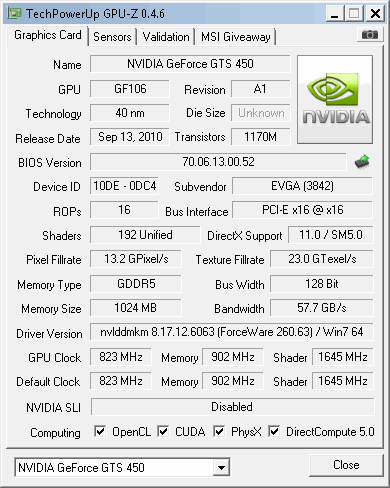
GPUZ confirms that the GTS 450 comes with 192 shader processors split in four Streaming Multiprocessor clusters and 1GB of GDDR5 memory on a 128-bit memory interface. There are 32 texture units and 16 ROPs. Shader processors are clocked at twice the GPU’s clocks – 1646MHz.
GF106 GPU is the GTS 450’s ticker, which is of course derived from Fermi architecture. It packs about 1.17 billion transistors, unlike the GF104 which uses 2.1 billion or GF100 with its 3 billion transistors.
Just like the GTS 460, the GTS 450 should be a good overclocking material.
As you can see from the picture, EVGA GTS 450 FBS (Part Number: 01G-P3-1450-ET) comes with dual slot cooling. It’s the reference solution used by many partners on their GTS 450 cards, and the decision to keep reference cooling is quite expected as the cooler is not only efficient – it’s also pretty quiet.
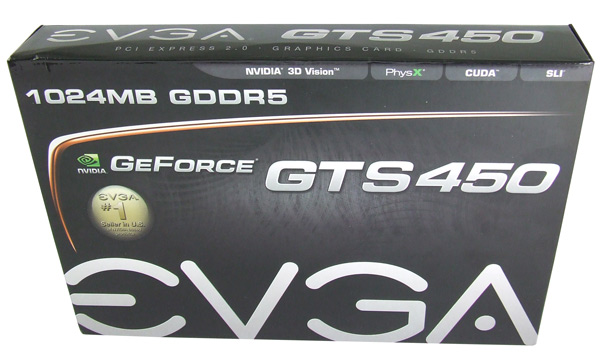
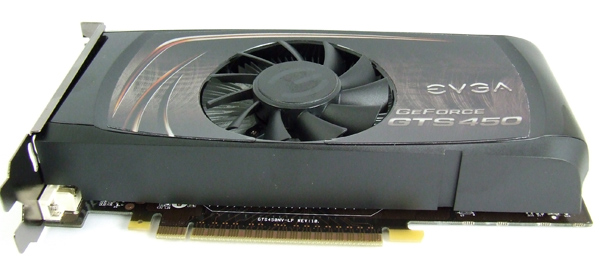
EVGA GTS 450 FBS comes with 1GB of Samsung’s K4G10325FE-HC05 GDDR5 memory, equally distributed across both sides of the card.
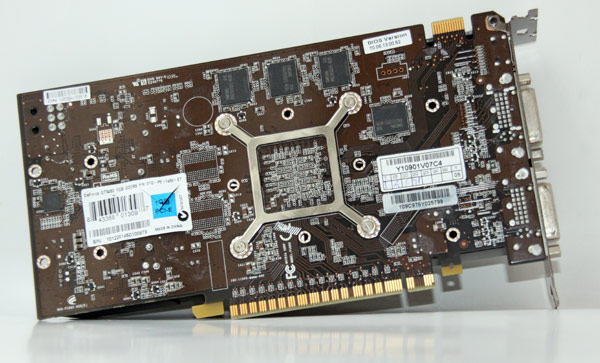
Most GTS 450 cards, including our today’s sample, come with two dual-link DVI and one mini-HDMI connector, although partners are free to express themselves in this respect.
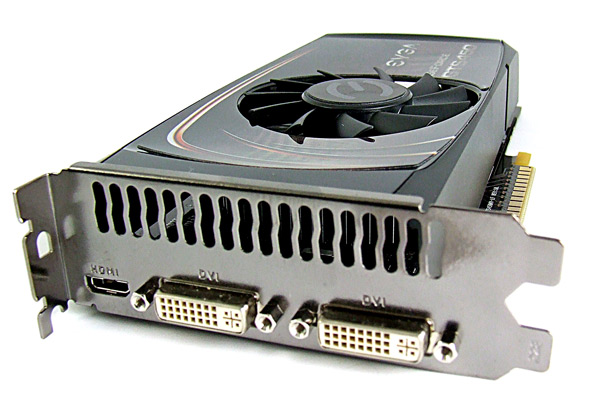
The card comes with one SLI connector allowing for 2-way SLI. This means that you can only add one more GTS 450 if you happen to decide on upgrading your graphics at a later date.
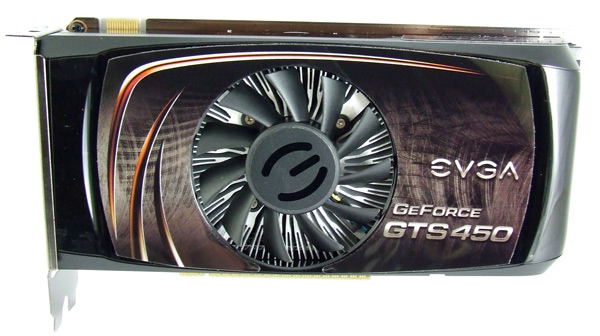
The card is powered via one 6-pin power connector with the card’s TDP totaling at 106W.
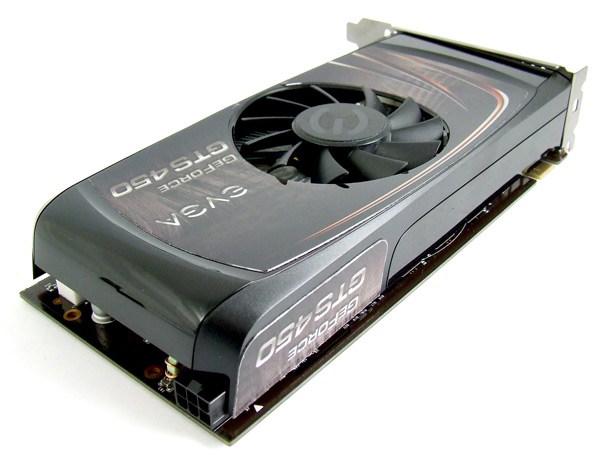
Testbed:
Motherboard: EVGA 4xSLI
CPU: Core i7 965 XE (Intel EIST and Vdrop enabled)
Memory: 6GB Corsair Dominator 12800 7-7-7-24
Harddisk: OCZ Vertex 2 100 GB
Power Supply: CoolerMaster Silent Pro Gold 800W
Case: CoolerMaster HAF X
Fan Controler: Kaze Master Pro 5.25"
Operating System: Win7 64-bit
260.63_desktop_win7_winvista_64bit_english
10.9 CCC
3DMark Vantage
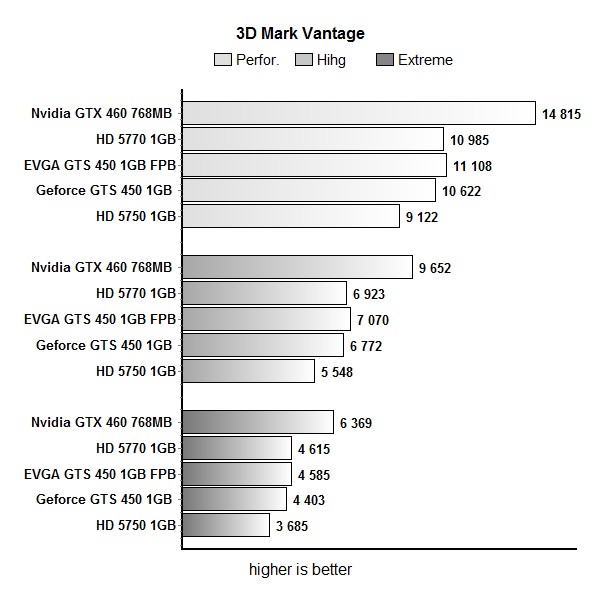
Aliens vs Predator
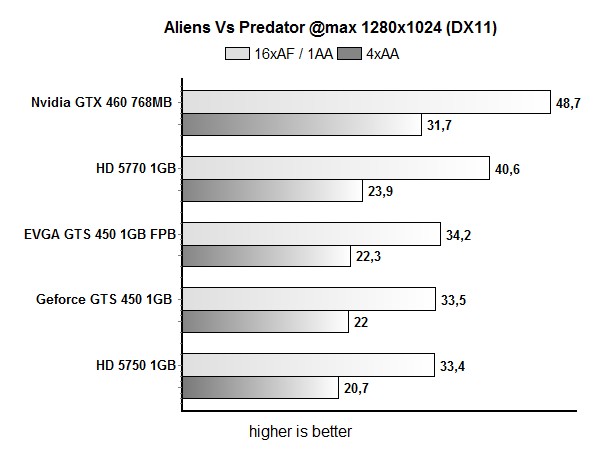
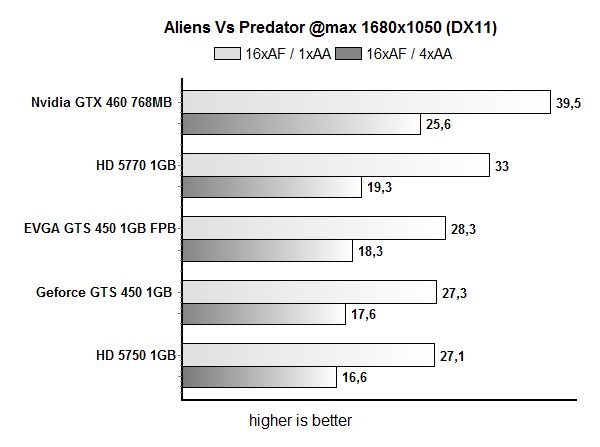
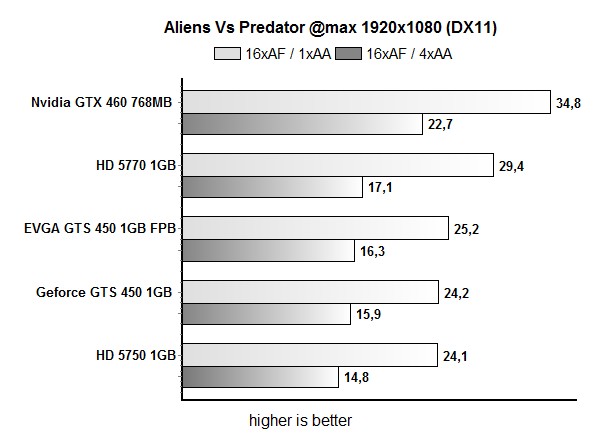
Dirt 2
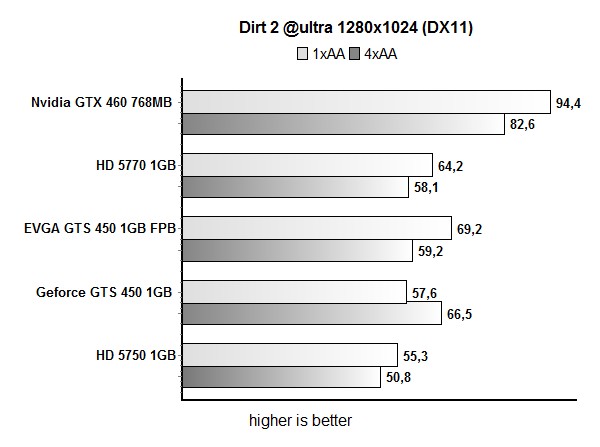
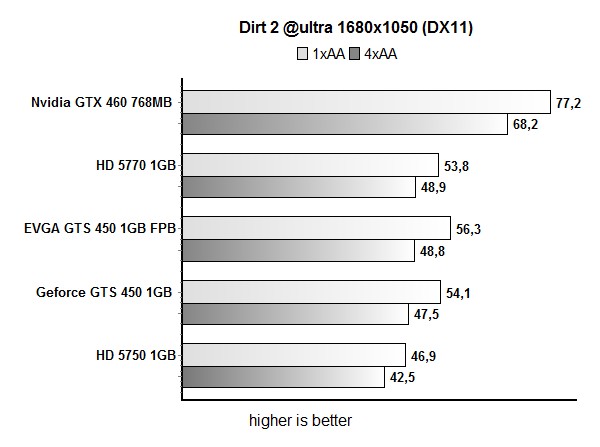
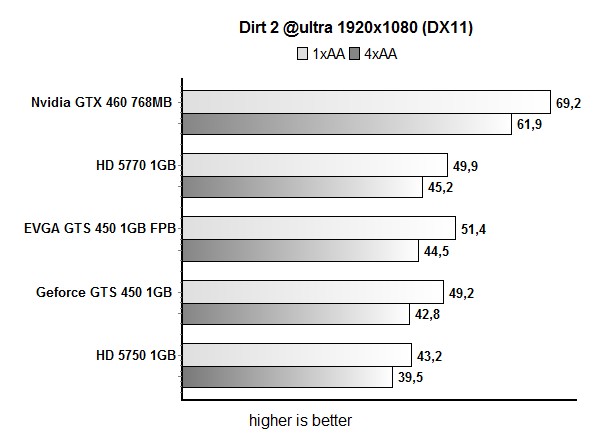
Tesselation test - Unigine Heaven v2.1
The distinguishing feature of this benchmark is hardware tessellation, a scalable technology aimed for automatic subdivision of polygons into smaller and finer pieces, so that games gain drastically detailed and more elaborated look almost free of charge in terms of performance. Tessellation requires both a video card with DirectX 11 support and MS Windows Vista/7.
There are three tessellation modes available in this version of the benchmark:
Moderate Mode : This mode is targeted to provide reasonable performance on a wide range of DX11 hardware.
Normal Mode : Default mode available in the benchmark shows optimal quality-to-performance ratio. That's the way to achieve prominent visual difference with hardware tessellation technology.
Extreme Mode : It is designed to meet the perspectives of the next series of DX11-capable hardware pushing up the tessellation level to the extreme in the next 1-2 years.
Source, unigine.com
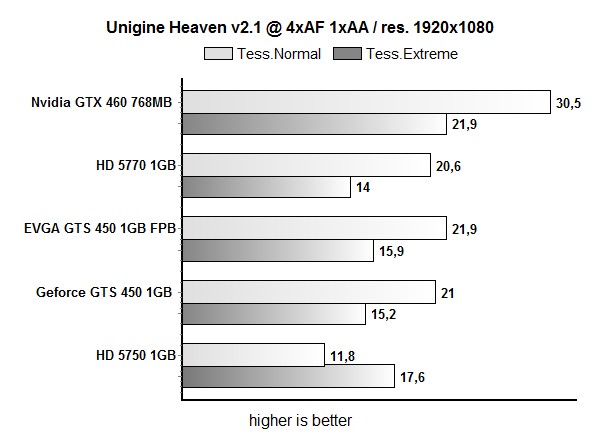
Tesselation test - TessMark
TessMark is an OpenGL 4 benchmark. That means you can play with GPU tessellation under Windows XP, Vista and Seven. Of course, you need a GeForce GTX 400 series or a Radeon HD 5000 Series. No GPU tessellation with previous generation of graphics cards!
Like Unigine Heaven, TessMark allows to select the level tessellation. The small difference is that TessMark proposes four differents levels (moderate, normal, extreme and insane), source geeks3d.com / oZone3D.net
TessMark settings:
- 1920×1080 fullscreen
- no AA, no Post-FX
- duration=60sec
- map set 1
GTX 480 Beast outruns the reference GTX 480 in OpenGL tessellation test by 14%.
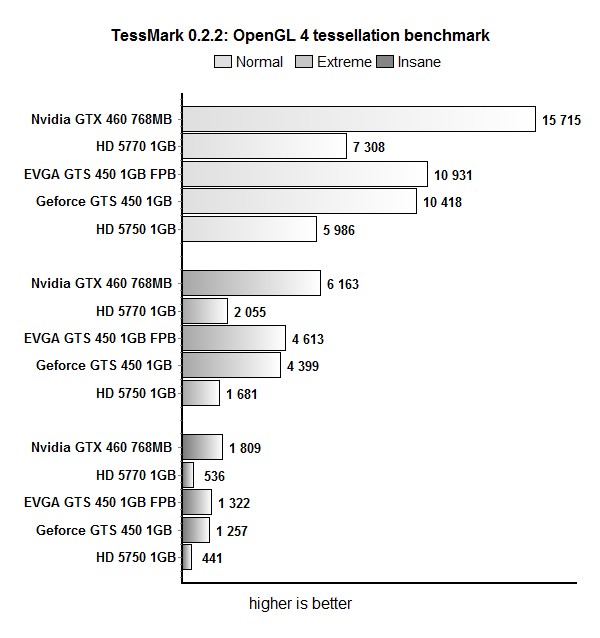
FurMark
FurMark is a very intensive OpenGL benchmark for the graphics card. The benchmark offers several options allowing the user to tweak the rendering: fullscreen / windowed mode, MSAA selection, window size, duration.
Increased graphics workload / power draw of FurMark 1.8.0 for all new graphics monsters such as HD 5870, HD 5970 or new GTX 480, leads to less FPS and lower scores compared to FurMark 1.7.0, source oZone3D.net / geeks3D.com 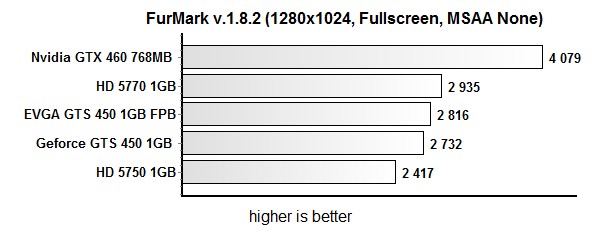
Metro 2033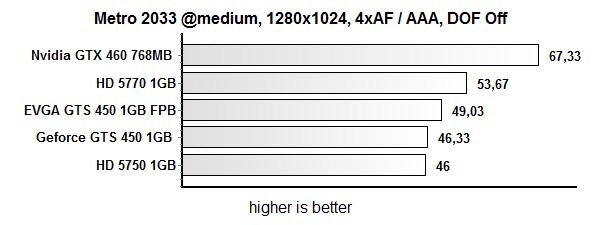
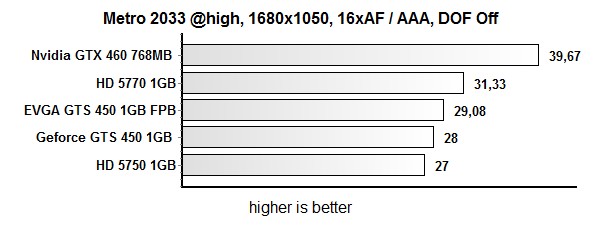
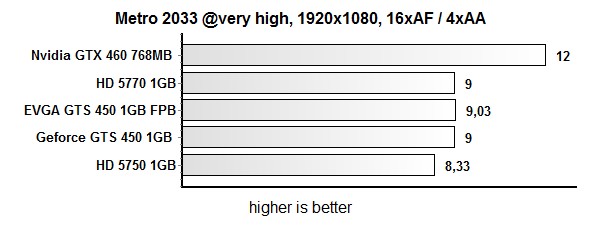
GTS 450 was launched soon after the widely acclaimed GTX 460 card, where we have decent performance at reference clocks, quiet operation as well as overclocking potential. Even more so, some partners dared to push the GTX 460's GPU to 850+MHz and back it up with a warranty.
Our EVGA GTS 450 showed nice overclocking potential, but we expected that - some partners pushed their cards to as high as 925+MHz. GTS 450 can run even faster though, as our result of 970MHz GPU proves.
Let us remind you that reference clocks on GTS 450 cards is 783MHz whereas EVGA GTS 450 FPB comes with a 823MHz GPU. The memory runs at reference 902 (3608MHz effectively) but we managed to push it up to 1090MHz (4360MHz effectively).
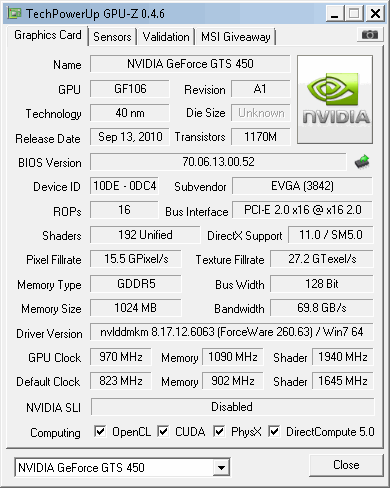
GPU temperatures on EVGA GTS 450 FPB card go up to 70°C with idle temperatures hanging around 28°C.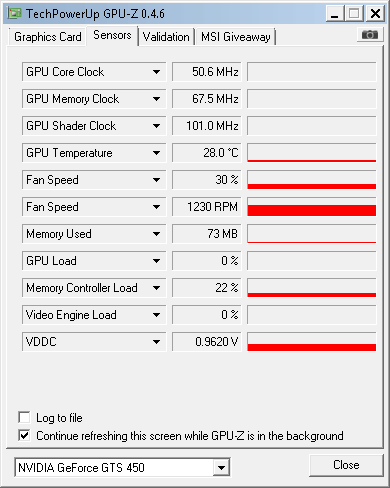
EVGA GTS 450 FPB uses reference cooling, with the fan spinning at 30% RPM and running really quiet, even when you put your ear closer to the card.
During our overclocking we pushed the fan as high as the card's BIOS allowed which was 70% RPM. Unfortunately, the card became pretty loud but in return our 970MHz GPU temperature was at 63°C. Naturally, you can always fine tune the noise-performance ratio and tailor it to suit your needs.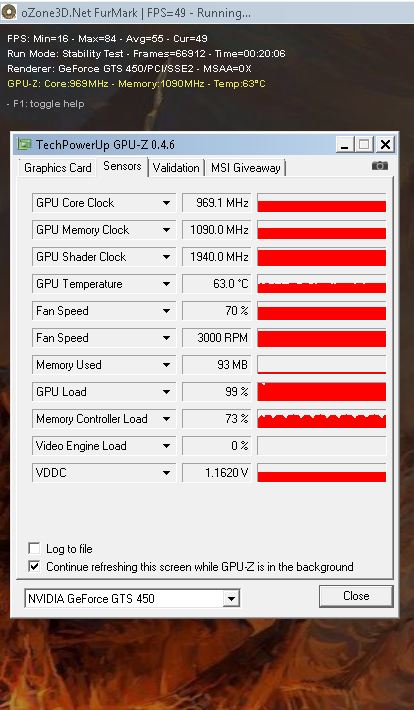
Idle consumption is a bit lower than on HD 5770 or HD 5750, but this figure rises during operation and consumption ends up higher than on HD 5770.
Conclusion
EVGA offers three GTS 450 cards: GTS 450 Free Performance Boost, GTS 450 Superclocked and GTS 450 For The Win. All three cards come overclocked with the FPB running at 822/3608 MHz, SC running at 882/3800MHz and the FTW at 920/4104MHz.
Our today’s guest was the most affordable of the three – the GTS 450 FPB (Part Number: 01G-P3-1450-ET). Just like the other two cards in EVGA’s arsenal, the GTS 450 FPB comes with reference cooling. The FPB is priced at €107, SC at €112 whereas the FTW version costs €120, here.
In short, the GTS 450 is a nice Fermi implementation with adequate performance for low-budget gaming. Gaming at 1680x1050 is a breeze but 1920x1200 is possible as well, although you’ll probably have to lower game detail settings. Furthermore, EVGA’s factory overclock of 40MHz for the GTS 450 FPB’s will result in about 4% improved performance compared to the reference card.
This card is backed with EVGA's 2-years warrany. You may extend your limited warranty, but here in Europe only FOR products refered to as E-Series products. For more information check here.
Geforce GTS 450 is an affordable card that features DirectX 11, CUDA, 3D Vision and PhysX support. The card’s performance is somewhere between the HD 5750 and HD 5770, which doesn’t make things easier for end users, especially considering that this price-range is usually dictated by the-cheaper-the-better rule.
So, EVGA GTX 450 FPB comes with efficient and quiet cooling, affordable pricing, factory overclock and even further overclocking performance.



